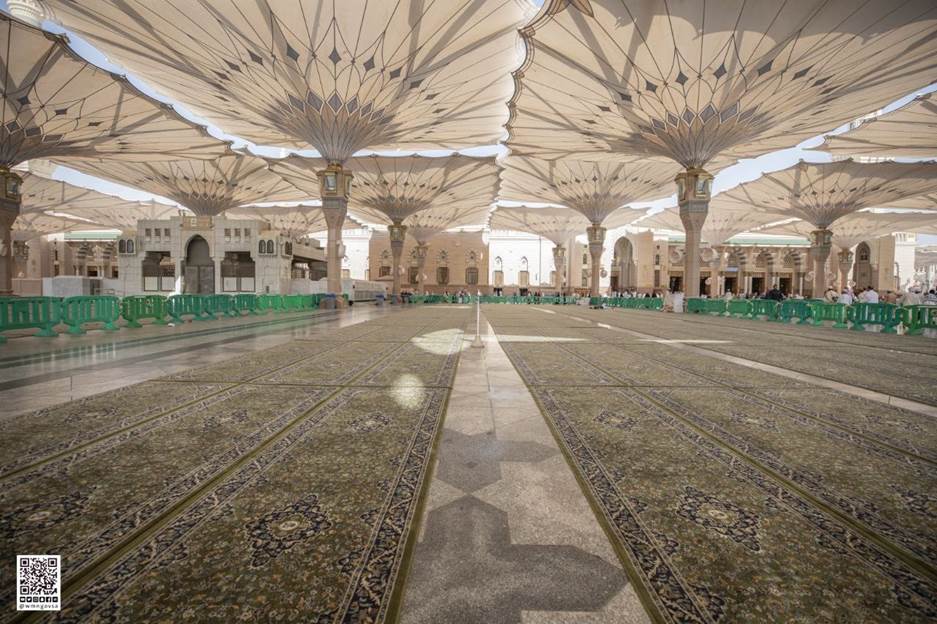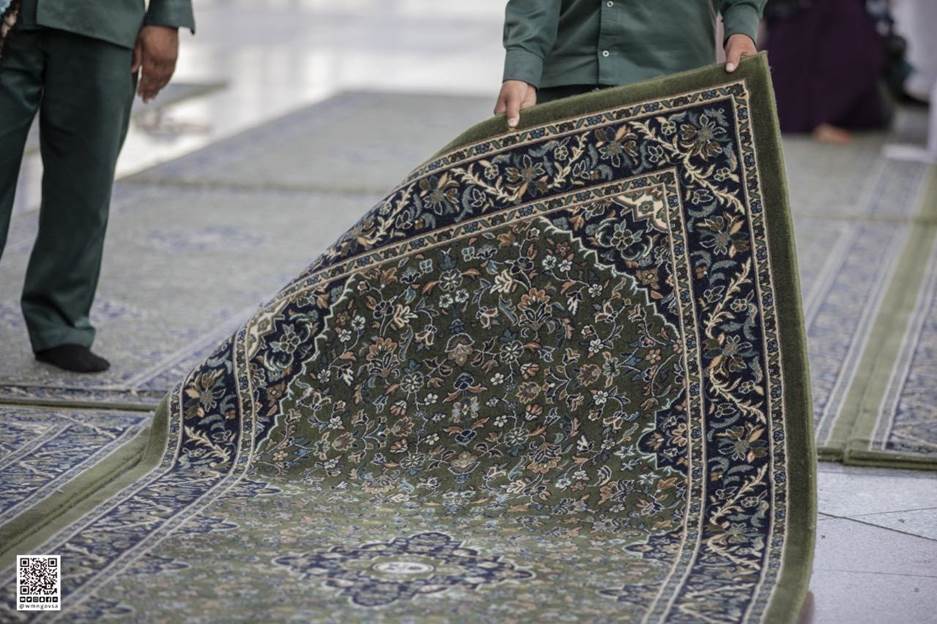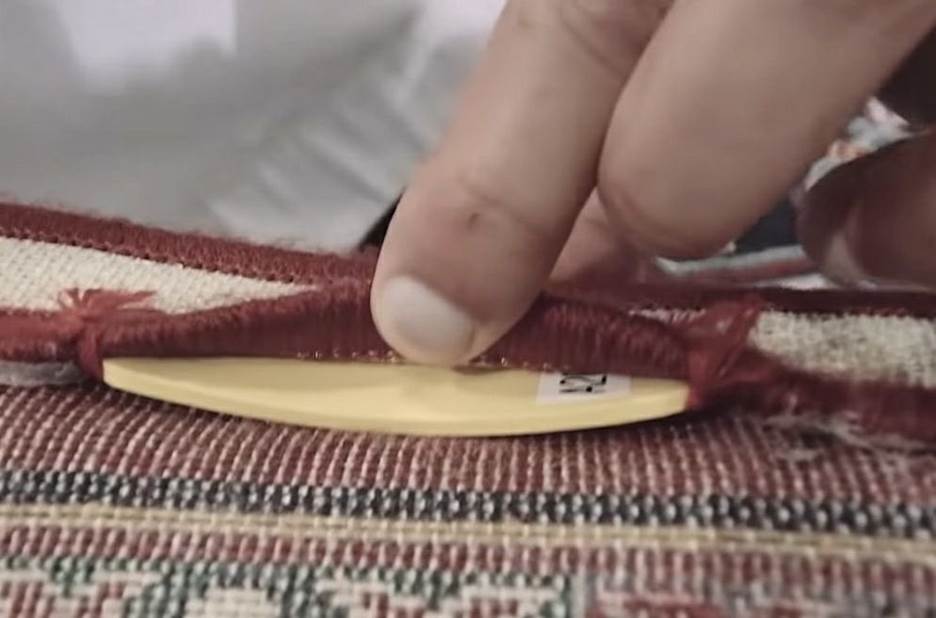
The prayer mats have been equipped with a radio-frequency identification (RFID) system and laid out in the mosque to facilitate worshippers - Twitter/ @HaramainInfo
Amazing Features of the Hi-Tech Prayer Mats at the Two Holy Mosques
Do you know that the Masjid-e-Nabawi, the second holiest mosque in Islam, recently introduced high-tech prayer mats that have electronic chips embedded in them?
These mats, which are equipped with a radio-frequency identification (RFID) system, have been laid out in the mosque to facilitate worshippers.
The carpets, which were made in Saudi Arabia, meet certain criteria and technical specifications to suit the spaces of the two Holy Mosques and meet the needs of pilgrims and visitors.

According to Al-Arabiya News , there are 25,000 such mats in Masjid-e-Nabawi, each with RFID chips linked to an electronic system with information about the carpets' manufacture date, use history, location, and timing of washing.
The RFID system enables the mosque authorities to automate the process of identifying which mats need washing and when.
The mats are made of a special fabric with a thickness of 16 millimeters, which is the perfect density to ensure that worshippers are comfortable during prayer.
The mats are also covered with yarn made of pure acrylic, with a height of 14 millimeters and 575,000 knots per square meter.
The mats have been designed to ensure their longevity and ease of maintenance, making them an ideal fit for the mosque. The innovative technology allows the mosque's authorities to easily manage and maintain the prayer area's cleanliness and facilitate the worshippers.
Jaber Ahmed Al-Wada’ani, the director of the carpet cleaning department at the Grand Mosque in Makkah, reported to Arab News last year that it took 11 months to manufacture the new floor coverings.
According to Al-Wada’ani, the high-quality and luxurious coverings were specifically designed to enable worshippers to perform their prayers with "all reverence and tranquility."
“In the past, the carpets of the Makkah Grand Mosque used to be imported from Germany, Belgium, and Lebanon for so many years. From 1999 to 2000, carpet importing was stopped, and the first batch of carpets was established in the Makkah factory,” he said.

The first 14 batches of the Makkah carpets made in Saudi Arabia had the same technical specifications. However, they were made with a red tone. Later, green was adopted, and this color became the standard hue for carpets across both mosques.
Al-Wada’ani said: “These carpets are made from 100 per cent pure acrylic yarn. The pile weighs 400 grams, and its height reaches 14 millimeters. The total height of one carpet is 16 millimeters.”
With their distinctive moss green tone, the carpets go through several washing operations during the year as the laundry supplies the Grand Mosque with 2,000 clean carpets a week.
There is around-the-clock monitoring of cleaning and maintenance issues, and workers in the mosque regularly sweep, sanitize, and perfume all the carpets over a 24-hour cycle.
Cleaning and maintenance issues are constantly monitored throughout the day, and workers in the mosque maintain a 24-hour cycle of sweeping, sanitizing, and perfuming all the carpets. – The Express Tribune

